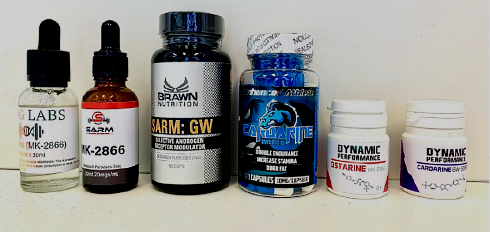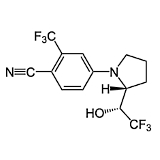|
Definition: "An ergogenic aid is any substance or phenomenon that enhances performance "
|
|
||||||||
06.11.2021 |
|
|
A coach, ostarine, GW1516 and rhabdomyolysis
A few weeks ago, Toxics published a chilling case study in which the combination of the SARM ostarine and PPAR-delta agonist GW1516 seemed to cause so much muscle breakdown that a trainer's kidneys were in danger of failing for good. This condition is called rhabdomyolysis. After a thorough reading of the piece, we suspect that there is more going on here.
Case study
The man says that a week and a half before he became ill, he had taken 20 milligrams of GW1516 daily for four days in a row. During that period, he also added 20 milligrams of ostarine for a day, the man admits. Both resources came from an online store. The document does not specify which products are involved.
The researchers determined the concentration of ostarine and GW1516 in the man's blood, urine and hair. The results suggest that the trainer at least used longer than he could remember.
The man's blood contains an alarming amount of the enzymes AST, ALT and CK. The doctors quickly arrive at a diagnosis: rhabdomyolysis. The enzymes indicate massive serious damage to cells. The cells rupture, their contents enter the blood, which explains the brown color of the urine.
In rhabdomyolysis, so much cell content can enter the blood that the kidneys, which have to filter the blood, fail.
Since the man's condition in the hospital deteriorates sharply within a few hours and his CK level continues to rise, the doctors decide to admit the man. They put him on an IV and pump three liters of water into his body in 24 hours.
Recovery
After two weeks, the doctors no longer see anything strange in his blood, although the trainer still feels tired and weak. According to the doctors, there is a full recovery six weeks after admission.
Conclusion (of the researchers)
"Even though liver injury or rhabdomyolysis from SARMs and PPAR-delta-agonist have not been reported frequently, one can anticipate that this may be observed more often as the abuse of these drugs increases in the athletic and aesthetic markets."
We know better
A more relevant question is whether the rhabdomyolysis was the result of the substances used by the trainer. We don't think so, and that's because of a mysterious phrase in Kintz's article.
The man had cycled 120 kilometers on the day before he became ill. That's quite a lot.
At the same time, the researchers report that the man's resting heart rate was 76. If you are 43 years old and have a resting heart rate of 76, then you are not fit. If you're going to cycle 120 kilometers, well...
We suspect that the main character in this case study was an unfit individual who overnight decided to upgrade his physical condition. He did so in a way that has become normal in this sad era. He put experimental drugs in his body, thought that this had turned him into a superhuman and went on a bike ride for 120 kilometres.
And then his urine turned brown.
Source: More: Archives:
|
|
|||||||||||||||










